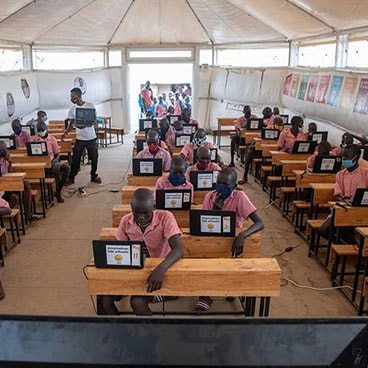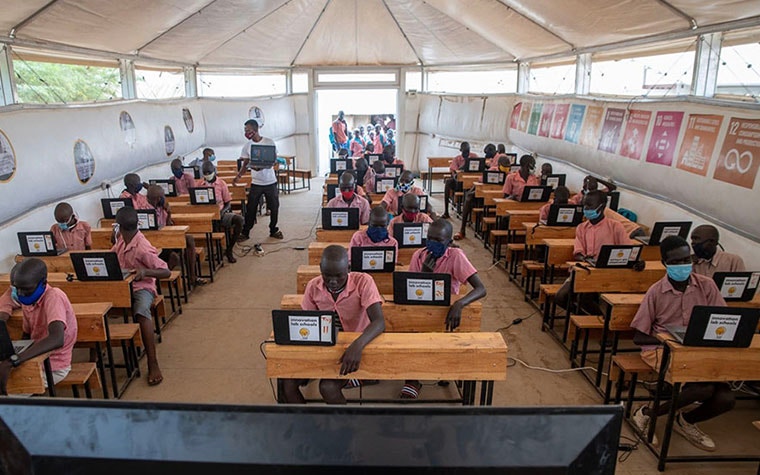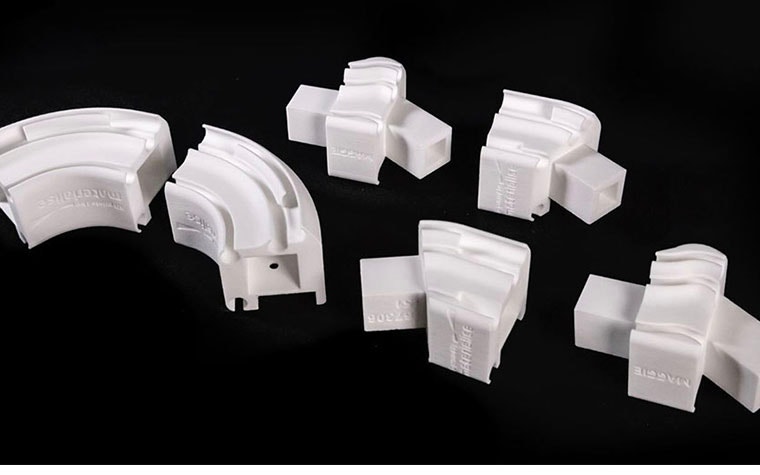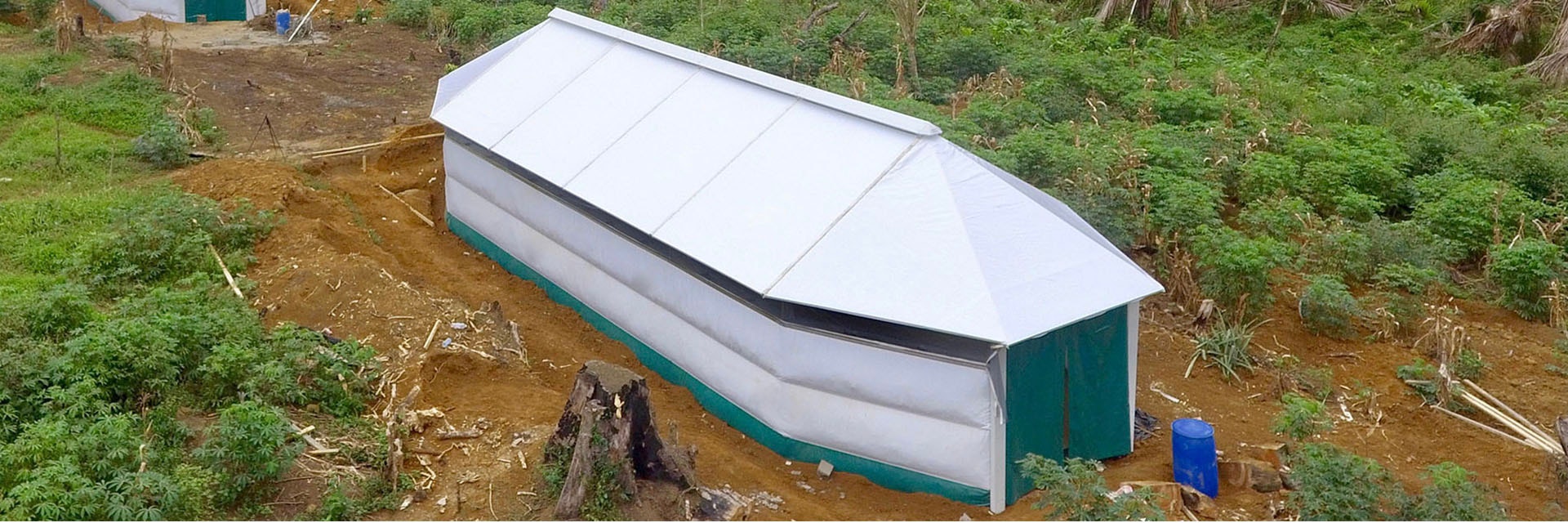CUSTOMER STORY
Maggie Shelters: Where Sustainability, Social Justice, and 3D Printing Meet

We have all seen this scene in the news: people are forced to leave their homes to escape war, persecution, or a natural disaster. Families run in search of a safer place, leaving all their belongings behind. Once they finally find shelter, infrastructure is minimal, yet they need to find a way to restart their lives. This scenario can sound foreign to many of us, but that's the reality of nearly 60 million people worldwide.
This is why a team of DMOA architects innovated to create the Maggie Shelter and start a non-profit called Maggie Program. These initiatives help those who were forcefully displaced from their homes. With their support, access to proper education, healthcare, temperature-controlled warehouses, and community centers is no longer a dream but a reality.


Their team designed the Maggie Shelter to provide the benefits of a permanent building in areas where only temporary structures are allowed. According to Benjamin Denef, CEO/Founder of DMOA and Maggie Program vzw, that is what sets this shelter apart: "The Maggie Shelter is a structure that looks like a tent but has the advantages of a real fixed building. By filling the double-walled structure on-site with local materials such as sand, insulation, and even plastic waste, and with the help of the local community, it creates a sustainable, circular, and ecological infrastructure that will last at least 15 years." Indeed, the project is a game-changer that provides long-term assistance in urgent times, offering comfort, access to education, and much more.
As you might imagine, during the development of such a project, the Maggie Program team encountered many different hurdles. They needed to design a shelter that is easily adapted to different climates, simple to assemble, cost-effective to transport, and sustainable in the long run. Being used for different purposes meant that the shelter had to transform into various layouts and be compatible with local materials when required.


But let’s focus on the challenge that Materialise helped with: creating a 3D-printed part that supports the setup which best insulates the shelters. Building a comfortable tent in extreme climates where temperatures can drop as low as -15°C and rise to +45°C in opposite seasons was a challenge. To create the ideal insulation, the Maggie team cleverly decided to use double fabric walls above each other.
And in order to successfully achieve this design, they needed connectors that would not damage the fabric yet sufficiently supported the tent. "We tried several things, including manually bending metal shapes, but nothing worked well at a reasonable price. 3D printing turned out to be the only way to design connectors that do not damage the fabric and allow for the easy set-up of the tent. I designed the parts myself, and Materialise printed the 64 connectors needed for the Maggie Shelter," recalls Benjamin.
Empowering social projects with Bluesint PA 12
The Maggie Program is aligned with everything that Materialise stands for. Many of our projects are devoted to empowering the choice for sustainability, but we believe that sustainability isn't just about sourcing materials and manufacturing. It’s also about taking action in places where environmental and social injustice is commonplace. Creating a meaningful impact means understanding that such injustices are not simply unfortunate outcomes but reasons to do things differently.
Materialise doesn’t only contribute to sustainable development by leveraging the power of our people and our products to reduce the impact that 3D printing has on the planet. We also put an effort into partnering with organizations that go above and beyond to provide a better future to those in need. That is why when Maggie Program proposed a partnership, we couldn't be happier to be a part of this great initiative.
Peter Leys, Executive Chairman at Materialise explains how this partnership showcases Materialise's commitment to shaping a better future through our technology and expertise: "When they came to us with a call for help for a technical challenge, we immediately said yes. Materialise manufactured the connectors they needed in a fast, reliable, and sustainable way using Bluesint PA 12, a brand-new, sustainable material that we recently launched."


The Maggie Program team was among the beta testers of Bluesint PA 12. With this technology, powder from laser sintering that would typically be wasted can get a second life to make brand-new parts. What does that mean in practice, you might ask? Well, it means that by using Bluesint PA 12 to print its 64 parts instead of using non-recycled powder, the Maggie Program reduced its CO2 emissions by 48 kg per Maggie Shelter. That is the same amount of CO2 that four trees can absorb over an entire year.
“We tried several things, including manually bending metal shapes, but nothing worked well at a reasonable price. 3D printing turned out to be the only way we could design connectors that do not damage the fabric and allow for easy set-up of the tent.”
— Benjamin Denef, CEO/Founder of Maggie Program
"3D printing is the perfect solution to quickly and cost-efficiently set up our shelters. And we chose Materialise as a partner because they use 3D printing technologies in a sustainable way. It’s important to us to work with companies that are constantly working on new ways to reduce their carbon footprints, so this sustainable material option aligns well with our mission," says Benjamin.
Ultimately, innovating to push the envelope and improve the way we treat the planet is the very backbone of everything we do. Supporting initiatives such as the Maggie Program is another step in our journey to make the world a better and healthier place.
Watch the video below to learn how Materialise the Maggie team collaborated to simplify the construction of the Maggie Shelters. We spoke with Benjamin Denef during the construction of two shelters that will serve as temporary classrooms in Belgium for two years. After that, the Maggie Shelters will be relocated to a refugee camp at hardly any cost since the rental fee paid by the Belgian school will cover most of the expenses.
Materialise is proud to support the Maggie Program.
Make your manufacturing process more sustainable
Discover Bluesint PA 12, a material with 100% re-used powder.
Partageons :
Vous aimerez peut-être aussi
Ne ratez jamais une histoire comme celle-ci. Recevez-les dans votre boîte de réception une fois par mois.
